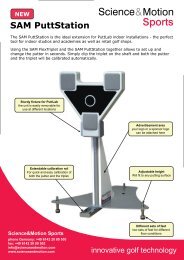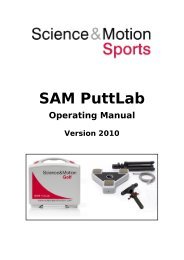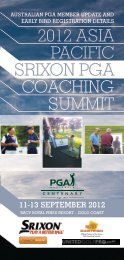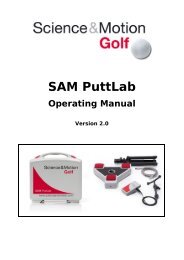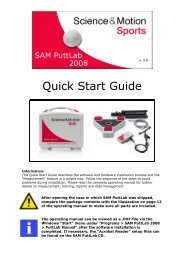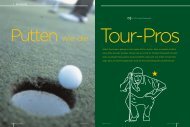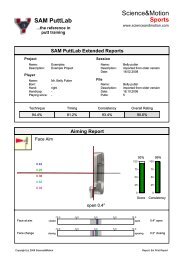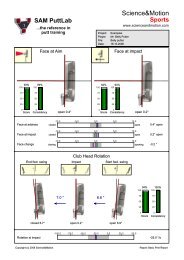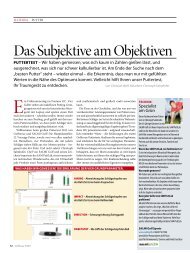SAM PuttLab - Reports Manual - Science & Motion Golf
SAM PuttLab - Reports Manual - Science & Motion Golf
SAM PuttLab - Reports Manual - Science & Motion Golf
Create successful ePaper yourself
Turn your PDF publications into a flip-book with our unique Google optimized e-Paper software.
<strong>SAM</strong> <strong>PuttLab</strong> - <strong>Reports</strong> <strong>Manual</strong><br />
2.10 Side View bar charts<br />
The side view bar charts provide information on each single putt. The<br />
colored stripes within the bars represent the different putts. The more<br />
closely grouped the stripes are, the more consistent the performance is. The<br />
structure of the graph is identical to the "Alignment bar chart" in chapter<br />
2.4.<br />
The parameter "Shaft at impact" provides information on the shaft angle at<br />
impact. This parameter directly corresponds to adding loft or delofting the<br />
putter face at impact. For this player the shaft is almost neutral at impact.<br />
As consequence the net loft if the putter to the ball is the static loft plus 0.1<br />
degrees. If the putter has about 3 degrees loft on the face, then the<br />
resulting net loft at impact will be 3.1 degrees.<br />
The "Height at impact" parameter indicates the height of the putter above<br />
ground while hitting the ball. This player hits the ball with a height of 8.1<br />
mm above the ground. For hitting the ball in the vertical sweet spot a height<br />
of about 8-10 mm is perfect. The hit distance on the putter face is shown in<br />
the Impact spot graph in chapter 2.6.<br />
The "Rise angle" parameter shows the angle of the putter path against the<br />
horizontal ground at impact. For this player the rise angle is 2.2 degrees<br />
upwards, which is little less than the perfect range of 3 to 4 degrees. A<br />
positive rise angle will give the ball some forward spin and a better roll. The<br />
skidding phase will also be reduced.<br />
There is an inter-dependence between rise angle and loft at impact. The<br />
more rise angle at impact is found the less loft at impact is needed to<br />
properly lift the ball from the ground. High speed video suggests that you<br />
should avoid backspin and skidding of the ball for proper roll. On a stimp 9-<br />
10 we recommend only 1 degree net loft but a rise angle of 3-4 degrees<br />
upwards, which will properly launch the ball and will impart immediate<br />
topspin to the ball.<br />
Page 17



